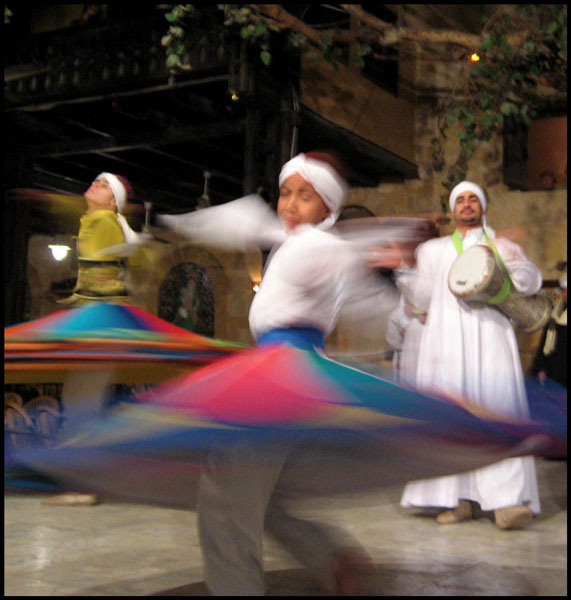I woke up this morning to the sound of thunderous applause.

After a long, hard week of suffering with insufferable allergies to everything green and growing here in this spring in The Old South (as I type on my front porch this
illumined screen is beginning to glow like deep sea algae as it is slowly - but resolutely - covered in a fine mist of tree pollen) I spent the night sleeping on my living room couch.
Along with the green stuff, we have had an early heat wave that has seen temperatures pushing toward the 90's and - rather than crank up the AC in order to cool down my 100 year old, upstairs apartment - I opted to curl beneath the cool currents from my open windows, basking in the moonlit breezes, listening to the Internet streaming away some nonsense about reverse-engineered UFO technology, benevolent aliens, human DNA and intergalactic brotherhood.
I woke up this morning to the sound of thunderous applause.
The annual Music City Marathon was passing by my window this morning as it does every year here on this, The Street of Dreams. Annually, Belmont Blvd. is suddenly awash in a sea of sweaty strivings. Seemingly countless numbers of Teams in Training and Fitness Walkers and Hardcore Runners and Svelte Seniors and any number of otherwise sane individuals create any number of excuses to reenact the brave deeds of that ancient messenger at Marathon.
The Battle of Marathon (Greek: Μάχη τοῡ Μαραθῶνος, Māche tou Marathōnos) took place in 490 BC during the first Persian invasion of Greece. It was fought between the citizens of Athens, aided by Plataea, and a Persian force commanded by Datis and Artaphernes. It was the culmination of the first attempt by Persia, under King Darius I, to subjugate Greece. The first Persian invasion was a response to Greek involvement in the Ionian Revolt, when Athens and Eretria had sent a force to support the cities of Ionia in their attempt to overthrow Persian rule. The Athenian and Eretrian had succeeded in capturing and burning Sardis, but was then forced to retreat with heavy losses. In response to this raid, the Persian king Darius I swore to have revenge on Athens and Eretria.
Once the Ionian revolt was finally crushed by the Persian victory at the Battle of Lade, Darius began to plan to subjugate Greece. In 490 BC, he sent a naval task force under Datis and Artaphernes across the Aegean, to subjugate the Cyclades, and then to make punitive attacks on Athens and Eretria. Reaching Euboea in mid-summer after a succesful campaign in the Aegean, the Persians proceeded to besiege and capture Eretria. The Persian force then sailed for Attica, landing in the bay near the town of Marathon. The Athenians, joined by a small force from Plataea, marched to Marathon, and succeeded in blocking the two exits from the plain of Marathon. Stalemate ensued for five days, before the Athenians (for reasons that are not completely clear) decided to attack the Persians. Despite the numerical advantage of the Persians, the hoplites proved devastatingly effective against the more lightly armed Persian infantry, routing the wings before turning in on the centre of the Persian line.
The defeat at Marathon marked the end of the first Persian invasion of Greece, and the Persian force retreated to Asia. Darius then began raising a huge new army with which he meant to completely subjugate Greece; however, in 486 BC, his Egyptian subjects revolted, indefinitely postponing any Greek expedition. After Darius then died, his son Xerxes I re-started the preparations for a second invasion of Greece, which finally began in 480 BC.
The Battle of Marathon was a watershed in the Greco-Persian wars, showing the Greeks that the Persians could be beaten; the eventual Greek triumph in these wars can be seen to begin at Marathon. Since the following two hundred years saw the rise of the Classical Greek civilization, which has been enduringly influential in western society, the Battle of Marathon is often seen as the pivotal moment in European history. For instance, John Stuart Mill famously suggested that "the Battle of Marathon, even as an event in British history, is more important than the Battle of Hastings". The Battle of Marathon is perhaps now more famous as the inspiration for the Marathon race. Although historically inaccurate, the legend of a Greek messenger running to Athens with news of the victory became the inspiration for this athletics event, introduced at the 1896 Athens Olympics, and originally run between Marathon and Athens. (From our good friends at Wikipedia)
Unlike most years - when such enthusiasms rouse me to waking just before they lull me back to The Shore of All Dreams - I popped right up, started the espresso - His Name Be Praised - and jumped into what turned out to be an ice-cold shower. Must-call-landlord...
Dear Landlord, please don't put a price on my Soul...
I made my way down to the Street of Dreams in a green T-shirt and over-sized cargo shorts, only to find that I was wearing the exact same outfit as a four-year-old kid who was standing near the edge of the street, yelling with great enthusiasm - if not eloquence - slurping on a fugitive, orange popsicle that was making a break for it all the way up to his sharp, bird-like elbows. He continued to CAW like an alabaster crow beneath his neat, Aryan crew-cut. Whether in praise or judgment I will never know.
That's when I heard the music.
One of the built-in features of Nashville is the addition of Live Music to every event you can possibly imagine. Even a strenuous athletic event of ancient origin is not spared this sonic pairing - no matter how incongruous.
I strolled up the street, mug in hand, toward the Bi Rite grocery, registering more moments of people-watching gold than it is possible to enumerate in this desperate scratching. As I made my way south, the dull throb of the music began to get clearer as the shorter frequencies began to match the pace of their big-bottomed brothers and the rhythm of the racers began to move - slighty in, and then slighty out of - time with Van Morrison's "Brown Eyed Girl". Suddenly I had a craving for a Natural Light and I had half a mind to go back and hang out with my co-ed neighbors who seemed to have taken to the lawn - along with more than one cooler - at the crack of the crack of the dawn.
That's when it happened.
As soon as I had recognized the old hippy chestnut it ended only to be followed by the most impressive feat of athletic fury I am sure to witness all day. As soon as Van The Man's "La La's" went bye-bye, they were replaced by the unmistakable strains of AC/DC's "You Shook Me All Night Long"! Impossible! This kind of segue is the musical equivalent of pole vaulting over a small building only to nail a perfect landing after picking off a bird-on-the wing at 50 yards with a biathalon rifle on the way down. For the first time - in a long time - I could feel the presence of true glory.
Again, His Name Be Praised.

As I write this, the race is coming to a close on my street. One side of the Boulevard is filled with the straggling walkers who make up the happy, hopeful end of the line. There is a group of hula hoopers coming down the way, lead by my pal Raquel. I thought that I had missed them, but - now that I see this madness - that would've been impossible. I'm looking for familiar faces, but I can't make out anyone in that sea of white t-shirts, pink hoops and unbridled enthusiasm.
Godspeed, good women.
The band seems to have stopped now. The last song I recognized was Tom Petty's "Last Dance With Mary Jane". An appropriate ditty for the reenactment of the deeds of a heroic warrior from an ancient, brave age? Probably not. An interesting suggestion for a silly street on a sunny Saturday soaked in morning dreams and the sound of the little white trucks picking up the little red cones that won't mark another mile until next year?
Sure enough.
(Right on cue, the coeds next door crank it up loud...)
He came from somewhere back in her long ago
The sentimental fool dont see
Tryin hard to recreate
What had yet to be created once in her life
She musters a smile
For his nostalgic tale
Never coming near what he wanted to say
Only to realize
It never really was
She had a place in his life
He never made her think twice
As he rises to her apology
Anybody else would surely know
Hes watching her go
But what a fool believes he sees
No wise man has the power to reason away
What seems to be
Is always better than nothing
And nothing at all keeps sending him...
Somewhere back in her long ago
Where he can still believe theres a place in her life
Someday, somewhere, she will return
She had a place in his life
He never made her think twice
As he rises to her apology
Anybody else would surely know
Hes watching her go
But what a fool believes he sees
No wise man has the power to reason away
What seems to be
Is always better than nothing
Theres nothing at all
But what a fool believes he sees...
(What a Fool Believes, The Doobie Brothers)




Use this player to listen to my new CD. Purchase a song or two at your favorite digital outlet and help us stay awake here at Insomnia!
Find the archives to my Sleepless Film Festival, and more at my You Tube channel:
Imagicon
Listen to my earlier releases, and enjoy free downloads here!
Please consider supporting this site by making a PayPal donation and check out our friends using the links on the right.
Love,
Joe Nolan

Labels: drugs, joe nolan


















